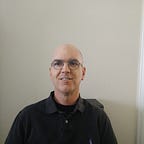What Faith Is Required To See
Long ago, I read an article that said that our eyes only “see” the top half of the waves of light that enter them. I’m not sure if that’s still true or not as science is constantly evolving, but I do know that our eyes see only a tiny fraction of the electromagnetic spectrum. The full spectrum that we know of, runs from radio waves to gamma rays, and the light that we can see is a tiny sliver of the spectrum.
I have long been fascinated with this idea about light, how little we see. I read long ago about very long baseline interferometry, a technique used to “see” very distant galaxies and powerful radio sources. With two telescopes on opposite sides of the earth, fixed on a distant object, we are able to resolve far better pictures of that object than with one telescope.
In a sense, we use interferometry with a pair of eyes. We call it parallax. We use parallax to fix the position of objects around us with two eyes. The short distance between our eyes limits the use of parallax to about 10 feet. There again, is a limit to our sight. Yet we put so much faith in what we see.
In our culture, we have taken notice of the limitations of our sight, and the power of our intuition. I have two examples to share, both of which you might have seen. The first is from the first Star Wars movie, where Luke Skywalker is in training with Obi Wan Kenobi, on the Millennium Falcon. Luke is training with his light saber against a robot that tests his agility. He is not doing well, so Obi Wan asks him to wear a face shield that he cannot see through, and he performs better. “Use The Force, Luke!”
Then there is a scene from the movie, “Indiana Jones and the Last Crusade”. He is hot on a puzzle to get the Holy Grail, and it is in sight, within his reach. But he must cross a deep chasm, with no apparent bridge. He is following the clues, and closes his eyes to take a step, only to find that the bridge was there, but it could not be seen, for it blended in with the surroundings. It was only when he gave up on his vision, and trusted the clues that he found the bridge holding him up as he walked across.
I am fascinated with these examples because I’m blind in one eye. Oh, I see something there, but it’s like a camera without a lens. I was born during the German Measles epidemic of 1964, and the virus impaired the development of one eye and one ear. So I see everything as if through a portal. Rather than being “in the world” I feel as if I’m watching the world…
